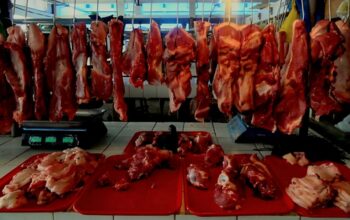
CONGRESSWOMAN Kristine Alexie B. Tutor expressed optimism over Bohol’s designation as one of the new 18 Global Geoparks by the United Nations Educational, Scientific and Cultural Organization (UNESCO).
The lady solon of the third district appeared to be elated over the feat as it included the Canumantad Falls, the highest here, in the geoparks being considered as significant nature formation.
“It’s a great honor that our very own Canumantad Falls, the highest water falls in Bohol, is included. With this inclusion and Bohol as a whole, it will spike more interest on the travelers and tourists alike on their bucket list to visit,” she told this writer exclusively.
UNESCO cited the Canumantad Falls located in the solon’s home town Candijay as one of the features in the consideration of naming Bohol as global geopark, the first in the Philippines.
Also cited in designating Bohol as geopark is the uplifted coastal area in the towns of Loon, dubbed as Coral Garden. The uplifted shoreline of few meters was the result of the October 15, 2013 earthquake.
UNESCO cited Bohol’s world known Chocolate Hills comprising of some 1,776 coned hills spread out in the towns of Carmen, Batuan, Sagbayan and other nearby towns. It also named the Danajon Double Barrier Reefs situated in the northernmost part of Bohol, said to be the only in Asia and one of the documented six barrier reefs in the world.
The new geoparks are: Caçapava and Quarta Colônia in Brazil; Lavreotiki, Greece; Ijen, Maros Pangkep, Merangin Jambi and Raja Ampat, Indonesia; Aras and Tabas, Iran; Hakusan Tedorigawa, Japan; Kinabalu, Malaysia; Waitaki Whitestone, New Zealand; Sunnhordland, Norway; Bohol Island, Philippines; Jeonbuk West Coast, Republic of Korea; Cabo Ortegal, Spain; Khorat, Thailand; and Mourne Gullion Strangford, United Kingdom of Great Britain and Northern Ireland. (rvo)



